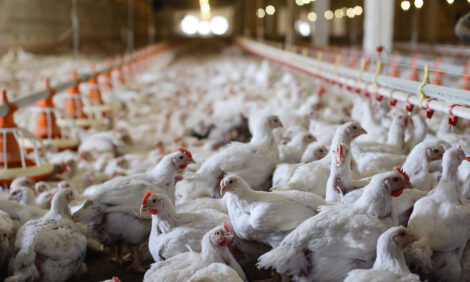



Unusually Warm Spring May Cause Stored Grain Problems
The warm spring temperatures following a warm winter may lead to stored grain problems, particularly for grain that exceeds the recommended storage moisture content or did not stay cool during the winter, writes Calli Thorne, North Dakota State University Extension Agent.The storability of grain depends on the grain quality, moisture content and temperature, says Professor Ken Hellevang, NDSU grain drying expert, who said: “Grain moisture content must decrease as the grain temperature increases to store grain safely.”
Due to the nice 2011 harvest season, some farmers only relied on field drying, and some crops were placed in
bins at moisture contents slightly above the recommended level for long–term storage.
Stored grain temperature increases in the spring due to rising outdoor temperatures and solar heat gain on the
bin. Solar energy produces more than twice as much heat gain on the south wall of a bin in early spring as it
does during the summer. Air temperatures in the bin head space will be much warmer than the outdoor air
temperature, which will heat the grain near the top surface.
Dr Hellevang also recommends monitoring stored grain closely to detect any storage problems early. Grain
temperature and moisture content should be checked every two weeks during the spring and summer. Grain
should be examined for insect infestations as well.
Corn needs to be dried to 13 to 14 per cent moisture for summer storage to prevent spoilage. Soybeans should be
dried to 11 per cent, wheat to 13 per cent, barley to 12 per cent and oil sunflowers to eight per cent for summer
storage.
Check the moisture content of stored grain to determine if it needs to be dried. Verify that the moisture content
measured by the meter has been adjusted for grain temperature. In addition, remember that moisture
measurements of grain at temperatures below about 40°F may not be accurate. Verify the accuracy of the
measurement by warming the grain sample to room temperature in a sealed plastic bag before measuring the
moisture content.
Grain storage moulds will grow and grain spoilage will occur in grain bags unless the grain is dry. Grain in the
majority of the bag will be near average outdoor temperatures, so grain will deteriorate rapidly as outdoor
temperatures increase unless it is at recommended summer storage moisture contents.
Start drying when the outside air temperature averages about 40°F. Below that temperature, the moisture–holding
capacity of the air is so small that very little drying occurs. Dr Hellevang recommends an air–flow rate of at
least one cubic feet per minute per bushel (cfm/bu) to natural air–dry up to 16 per cent moisture soybeans. The expected drying time with this air–flow rate will be about 50 days.
Dr Hellewang does not recommend operating the drying fan just during the day when the air is warm and shutting it off at
night because the warm daytime air normally dries the grain to moisture contents lower than desired. For
example, air at 70°F and 40 per cent relative humidity will dry corn to about 10 per cent moisture. The
grain above the drying zone will be warmer if the fan is run just during the warm portion of the day, which will
cause the grain to deteriorate faster. And even though the warm air may hold more moisture, the drying time is
still almost twice as long because the fan is operating only half of the day.
He suggests an airflow rate of at least 0.75cfm/bu to natural air–dry up to 17 per cent moisture wheat. Start
drying when the outside air temperature averages about 50°F. Drying during an average May is similar to
drying wheat and barley during an average September.
Also use an airflow rate of at least 0.75cfm/bu to natural air–dry up to 16 per cent moisture barley. This is
particularly important for malting barley in instances when germination can be lost.
May 2012









